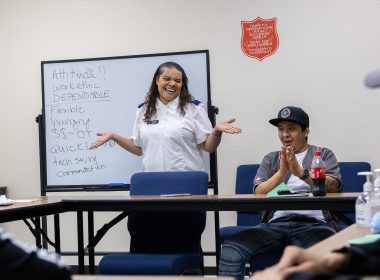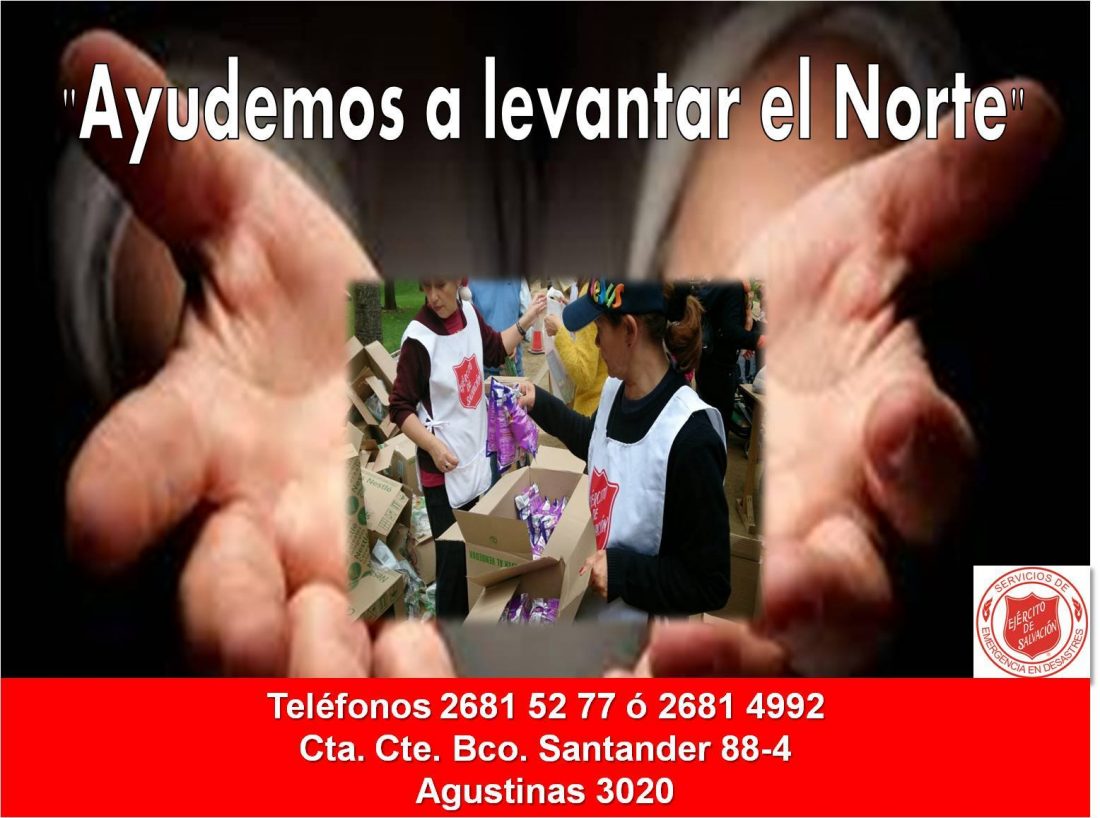Haiti
Home to perhaps the largest corps in the Western Hemisphere–Port Au Prince’s Central Corps–the Haiti Division is flourishing…against all odds.
Unemployment and illiteracy are rampant in Haiti; the government and economic system have been in chaos for years; and the poverty is overwhelming and unrelenting. Nothing is taken for granted here, especially communications: outside divisional headquarters, there are only four phones among the 34 corps and 14 outposts; mail service is unreliable. That means monthly reports must be delivered in person to DHQ–and for the officer at Couyot, that means a 7-hour walk to the nearest bus stop to start a 7-hour bus ride to Port Au Prince.
And yet, The Salvation Army is making a significant mark on hearts and lives. Haiti accounts for more than 50 percent of the numerical strength of the Caribbean Territory. More than 17,000 students, most in grades kindergarten through 6, attend 39 Army schools. Medical clinics provide life-saving treatment. Children’s homes offer love, security and stability.
“This is our journey of suffering and hope and faith we are making. We will not give up!” exclaimed Major Alfred Pierre, Haiti divisional commander.
“The problems of Haiti are the dire poverty and the political problems,” adds Major Charnie Pierre. “The Salvation Army helps, even though poverty is so great. It’s like a stone thrown into a big ocean…we are doing our best with limited resources. I say, ‘Thank you Lord, for the work we can do.’ ”
Schools and clinics
By all accounts, Salvation Army schools in Haiti have significantly affected hundreds of thousands of lives through the years. One of the forces in developing the school systems has been Major Rosa Maria Haefeli (R). Recently retired, the Swiss officer has served in Haiti for the past 30 years.
In Port Au Prince, a sea of blue uniforms and broad smiles stretched across the plaza as students lined up for morning exercises. More then 1,000 students enthusiastically sing “O Boundless Salvation” and Haiti’s national anthem as they raise the Haitian and Salvation Army flags before classes begin.
Just 70 miles away (but a tortuous three-hour car ride over bumpy roads), Fond des Negres is home to a number of Army services: the Bethany Home for Children, the Bethel Maternity Home and Dispensary and Nutrition Centre, Bethesda Centre, the Fond des Negres Corps and a primary school attended by 1,200.
Founded in 1951, the corps is one of the oldest in Haiti; youth councils for the southern region are slated to be held at the primary school, attended by 1,300 youth. (Since the Army in Haiti has no venue large enough to hold a single divisional youth councils, three are held in different locations: the north recently had 400 delegates and the south, 800.)
Under the leadership of Captain Glenda de Randamie, with Major Emma Zimmerman, the clinic sees 220 sick patients each day. Two full-time and two part-time doctors (an eye docter and a gynecologist) provide the only medical care for miles around. Five technicans and three aides perform 500 laboratory tests a day for 150-160 people. In addition, they see more than 500 tuberculosis patients a year.
“We provide AIDS education for 80 villages in the area,” said de Randamie. “Of those we test for AIDS, 30 percent are positive.” She also started a small Bible book store in the clinic, because “there is no place here to buy Bibles.”
Zimmerman also oversees the children’s center, where 16 children live during the school year. Ten more have meals there.
Port Au Prince
Located on the same campus as College Verena, the Army’s Nutrition Center and Under Five Clinic are providing live-saving services for many, particularly women and children. Under the direction of Major Petronella Verstoep, the clinic sees up to 300 patients a day. Eighty percent of the clients are children under the age of 5.
HEALTH CLINIC–Major Petronella Verstoep, top right, watches during a well-baby check-up.
The outdoor waiting area is filled early. “They used to come at 5 a.m. for our opening at 7 a.m. and wait outside our gates, but drug dealers started coming and stealing their money,” said Verstoep. While mothers wait for medical care, they receive health education in small groups. Elsewhere at the center, young children are fed porridge in a program to combat malnutrition. One 10-year-old girl brings her 20-month-old sister, who has third-degree malnutrition. AIDS education classes are held here as well.
A few steps away is the home for children, La Maison du Bonheur, directed by Major Anna Kristine Herje. Here, more than 50 young children and young people are provided a safe and caring environment.
Haiti Congress
The recent Haiti Congress drew 3,000 to the Sunday morning Holiness meeting, with 2,000 attending an open-air meeting in downtown Port Au Prince. Two of the meetings were broadcast live on the local Christian radio station.
During the Congress, General Paul A. Rader announced the promotion of Divisional Commander Major Alfred Pierre, and Divisional Director of Women’s Organizations Major Charnie Pierre, to Lt. Colonels. He also enrolled 401 soldiers.
Western Women Get InvolvedWestern women raised $21,767 to support educational, medical, vocational and school programs in Haiti for the 1997 Women’s Ministries territorial project. The monies will play a key role in providing much needed skills. “Skills and training are most important,” said Commissioner Doreen Edwards, “so people can make a living. We must teach women, so they can return to their villages and help other women.” Funds are being used to:
|
French HeritageHaiti, which occupies one-third of Hispaniola, is a land whose wounds from civil strife are still very fresh. The economy is in shambles, poverty and crime are on the increase, and its democratic traditions are weak. Music, art, and the poetic Creole language enrich this otherwise poor nation. Columbus arrived on Hispaniola in 1492 and was followed by Spanish conquerors, who killed many natives while searching for gold. Spain imported thousands of African slaves to work the plantations. In 1697, the western portion of the island passed over to the French, who continued to treat slaves harshly. In 1804 the Haitian slaves revolted and established what is now the second-oldest republic in the hemisphere and the first to have abolished slavery. Francois “Papa Doc” Duvalier, a ruthless dictator, was in control from the late ’50s until 1971. His son Jean Claude (“Baby Doc”) took the reins until he was deposed in 1986. Since then, democratic rule has done little to improve Haiti’s devastated economy, the poorest in the Western Hemisphere. Though its unemployment rate hovers around 80%, its people are known for their work ethic. Ethnic makeup: 95% black; 5% mulatto plus white; language: French and Haitian Creole; literacy: 59% of men and 47% of women; life expectancy: 51+ for women and 47+ for men; religion: 80% Catholic, 10% Protestant, 10% voodoo. |









